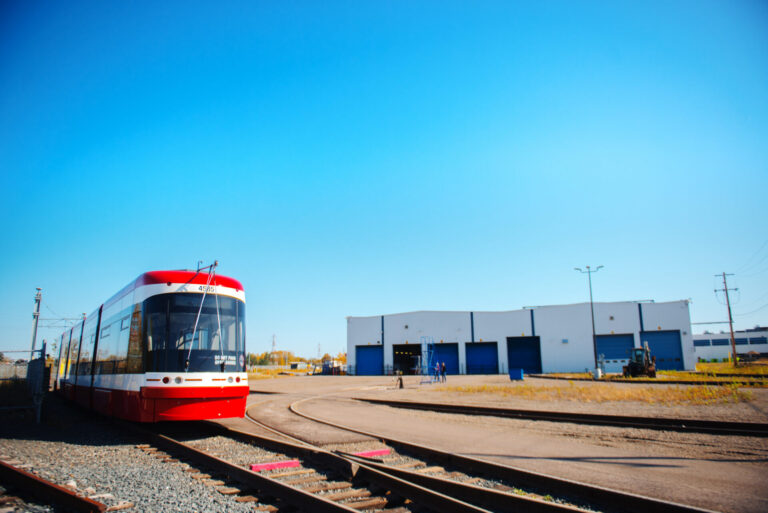In the face of growing pressure to build more, faster, Canadian construction leaders agree that the industry must move quickly to embrace new and advanced technologies, with most saying digital tools are already starting to boost their productivity, finds a new KPMG in Canada report on digital maturity in the construction industry.
“It is good to see that the sector is investing in the technologies that are desperately needed to address persistently poor productivity levels,” said Tom Rothfischer, Partner and National Industry Leader, Building, Construction and Real Estate, KPMG in Canada. “These investments are about to pay dividends and transform how we build in Canada. But the current economic and trade environment is squeezing bottom lines, putting at risk much-needed continued spending on tech – technology that is essential if we are to address the chronic housing supply shortage in this country and transform our economy through an ambitious era of nation-building mega-projects.”
Clients – those who commission and fund construction projects — can play a key role in influencing the industry to modernize, the report says. Nearly eight in 10 (78 per cent) say procurement processes are changing to encourage innovation and digital adoption, and 43 per cent indicated that their clients play a “highly influential” role in their decision to adopt technologies.
“It’s encouraging to see signs that procurement is beginning to evolve, but we’re not there yet,” said Rodrigue Gilbert, president of the Canadian Construction Association. “Too often, the system prioritizes lowest price over long-term value, which prohibits investment in innovation. If we want a modern, productive construction sector, governments must reform procurement to foster collaboration, ensure fair risk-sharing, and create the confidence companies need to invest and grow.”
The level of tech investment will need to ramp up given that the industry’s labour crunch is expected to worsen as the workforce ages and retirements increase in the next decade, the report points out. Nearly three-quarters (73 per cent) of construction leaders expect that it will become “increasingly difficult” to meet demand over the next five-to-10 years, particularly as retirements outpace recruitment.
“The pressure is intensifying on the construction industry to do far more with less,” said Jordan Thomson, National Sector Leader, Building and Construction, KPMG in Canada. “The industry is well aware of their labour conundrum, with eight in 10 companies still experiencing a shortage in skilled labour that’s affecting their ability to take on new work and complete current jobs. While it’s improved slightly from two years ago, it’s still incredibly high.
“The industry is also counting on the removal of interprovincial trade barriers,” he added. “The challenges of working under 14 different sets of provincial rules and regulations is a further and unneeded drag on productivity that needs to be addressed if we expect the industry to be able to handle the growing volume of projects in the pipeline.”
The report finds that the industry is focused on deploying a wide range of technologies to improve productivity and expedite project completion, with 81 per cent of construction companies saying their recent investments in technology are already making a difference.
Some of these technologies include advancements in modular or prefabrication construction that streamline processes, reduce waste, and accelerate timelines by constructing buildings in a controlled factory environment and then transporting them to the construction site for assembly; robotics and automation, such as robotic bricklaying that improves productivity and safety, or drones for site surveys; and, building information modelling (BIM), which improves planning and collaboration among stakeholders by providing a comprehensive digital view of the project from the architectural design to the materials, systems and infrastructure that will be needed.
Investing in technologies to create a demand-driven supply chain that aligns supply with actual demand was ranked the top priority by more than half (56 per cent) of respondents surveyed, the report finds.
“The industry has always faced supply chain challenges, whether it’s the cost or availability of materials,” said Thomson. “But that’s recently been exacerbated by, among other things, U.S. tariffs, ongoing ripple effects from the pandemic, and other global macroeconomic events, prompting many companies to invest in supply chain innovation that uses digital tools, data analytics and automation that drive real-time visibility into projects and material requirements.”
The report shows that industry players are prioritizing a number of new technologies in parallel, spanning from 56 per cent exploring demand-driven supply chain innovation to 40 per cent exploring robotics, drones, exoskeletons. More than half (53 per cent) are prioritizing prefabrication as well as artificial intelligence (AI) and AI-driven software. Engineering firms and suppliers are focused on deploying intelligent automation, institutional owners are investing in AI, and contractors are prioritizing cybersecurity technologies.
“We’re seeing much more interest in tech adoption compared to where we were even two years ago. However, the sector still has a long way to go to move the needle on productivity,” said Thomson. “Making a commitment to invest in technology is the first step. Delivering returns requires careful integration and only works if you also invest in up-skilling your people to use it effectively.”
Key survey findings:
- 87 per cent of 265 Canadian construction leaders agree the industry will need to implement new and advanced technologies to meet the demand for housing
- 90 per cent agree that better tools, such as AI, analytics, BIM and digital twins, can boost efficiency and labour effectiveness, up from 86 per cent in 2023
- 78 per cent say procurement processes are changing to encourage innovation and digital adoption
- 43 per cent say their clients are “highly influential” in their decision to adopt technology to meet project or contractual requirements
- 73 per cent expect it will become “increasingly difficult” to meet demand over the next five-to-10 years, particularly as retirements outpace recruitment
- 78 per cent are currently experiencing a shortage of skilled workers, compared to 90 per cent in 2023
- 70 per cent say the labour crunch is impacting their ability to bid on new projects and/or meet project deadlines, compared to 86 per cent in 2023
- 84 per cent want to see interprovincial trade barriers eliminated as quickly as possible
- 81 per cent say labour productivity and efficiency has improved as a result of their company’s recent investments in technology
- 56 per cent are prioritizing technologies underpinning a demand-driven supply chain
- 53 per cent are making prefabrication and modularization a top or high priority in their business and another 27 per cent have it as mid-level priority
- 53 per cent are also prioritizing AI and AI-driven software
“The construction sector is the foundation of Canada’s nation-building ambitions. From housing to trade-enabling infrastructure to clean energy, nothing gets built without us,” said Gilbert. “It’s time for coordinated action. The government must modernize procurement, cut red tape, and provide the clear, consistent policy direction our sector needs to deliver. The time to act—together—is now.”
About the Survey
In its third biennial survey, KPMG in Canada surveyed 265 construction companies across Canada from March 18 through April 4, 2025, in collaboration with the Canadian Construction Association to measure the sector’s digital maturity. The survey was conducted among KPMG clients and Sago’s construction industry business panel respondents on the polling agency’s online Methodify platform. The survey included general contractors (63 per cent), engineering firms (15 per cent), subcontractors (12 per cent), suppliers (8 per cent), and institutional owners (3 per cent).
Featured image: (Getty Images)












